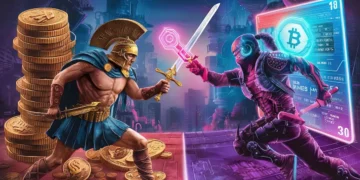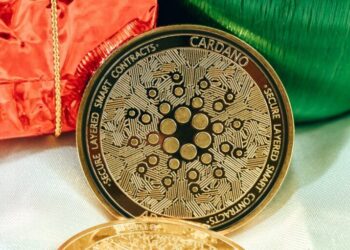Introduction
Cardano’s native tokens are a cornerstone of the blockchain’s performance and neighborhood engagement. These tokens, which might be user-defined, are handled by the Cardano ledger equally to its native foreign money, ada. For the reason that Mary hard fork in March 2021, Cardano has supplied built-in assist for native tokens, eliminating the necessity for customized code for his or her creation, switch, or deletion. Notably, a single Cardano transaction can deal with a number of tokens and addresses for a single transaction charge, making using native tokens less expensive.
Cardano’s native tokens supply a sturdy multi-asset function, permitting for transactions involving each ADA and a vast variety of user-defined tokens, in accordance with the official Cardano documentation. This native assist eliminates the necessity for good contracts to handle customized tokens, thereby decreasing complexity and the potential for errors. The native tokens function extends Cardano’s present accounting infrastructure, which was initially designed for ADA-only transactions, to accommodate quite a lot of belongings. These belongings can vary from digital currencies like ADA to user-defined customized tokens.
The documentation additionally delves into the idea of minting insurance policies, which govern the creation and destruction of belongings. These insurance policies might be so simple as requiring particular signatures for minting or as advanced as Plutus Core scripts. Each asset is completely related to a minting coverage, making certain security and integrity. Cardano’s native tokens might be fungible or non-fungible, and so they can signify quite a lot of values, similar to roles, credentials, or portions of products. Not like ERC20 tokens on the Ethereum blockchain, Cardano’s native tokens are supported by the ledger natively, providing enhanced safety and effectivity.
Cardano’s native tokens even have a lifecycle that features minting, issuing, utilizing, redeeming, and burning phases. Varied actors like asset controllers, token issuers, and token holders work together all through this lifecycle. ADA stays the principal foreign money for transaction charges and minimal account balances, even when coping with native tokens.
On 5 September 2023, Important Cardano offered a complete guide to the ecosystem gamers that assist Cardano’s native tokens. Beneath are a couple of highlights from their report.
The Affect of Native Tokens on Cardano’s Ecosystem
Native tokens have opened the door for progressive functions inside the Cardano ecosystem, starting from the institution of loyalty applications to enabling peer-to-peer transactions.
The introduction of native tokens has been a catalyst for the adoption of the Cardano blockchain, attracting a broader person base and developer neighborhood.
The Cardano blockchain facilitates the illustration and buying and selling of digital belongings by tokenization, additional increasing its utility.
Native tokens have been instrumental within the development of decentralized finance on Cardano, enabling the event of a sturdy ecosystem of decentralized functions (DApps) providing monetary providers.
Instruments for Native Tokens
Improvement Businesses and Platforms
- Ada Anvil: Focuses on NFT minting, staking, airdrops, and customized providers.
- Buffy Bot: A publishing firm centered on Cardano NFT tasks.
- Cardano Sounds: Goals to create a brand new economic system inside NFTs, permitting creators to earn royalties.
Consumer Interfaces and Minting Platforms
- Cardano Token and NFT Builder: An internet-based GUI.
- CNFT Lab: A complete Web3 software for minting CNFTs and managing coverage IDs.
- Minted with Lovelace: A decentralized launchpad DApp for automated NFT/Token minting.
Wallets Supporting Native Tokens
- Adalite Pockets: An open-source client-side interface developed by Vacuumlabs.
- Daedalus Pockets: A full-node desktop pockets.
- Nami Pockets: A browser-based extension.
Featured Picture by way of Unsplash
















































































clomiphene cost can i purchase generic clomiphene without insurance cost of clomid price where can i buy generic clomiphene no prescription how to buy cheap clomid pill how to get clomiphene price how to buy clomid without prescription
This website exceedingly has all of the low-down and facts I needed to this case and didn’t positive who to ask.
More text pieces like this would insinuate the web better.
buy cheap generic azithromycin – brand tetracycline 250mg metronidazole 200mg price
order rybelsus generic – generic rybelsus buy periactin without a prescription
cost motilium 10mg – domperidone 10mg for sale flexeril 15mg us
buy augmentin 625mg pill – https://atbioinfo.com/ acillin sale
cost nexium 40mg – https://anexamate.com/ nexium 40mg generic
coumadin for sale – cou mamide order losartan 25mg pills
meloxicam 7.5mg cost – https://moboxsin.com/ buy mobic 7.5mg without prescription
order deltasone 5mg pills – https://apreplson.com/ cheap prednisone
best ed medications – https://fastedtotake.com/ ed pills gnc
amoxil drug – comba moxi buy amoxil medication
purchase diflucan sale – https://gpdifluca.com/ buy fluconazole without prescription
lexapro for sale online – escita pro order lexapro generic
order cenforce 50mg generic – cenforce 50mg brand buy cenforce 50mg without prescription
generic tadalafil 40 mg – how many mg of cialis should i take cialis softabs online
canadian cialis 5mg – https://strongtadafl.com/ cialis 20mg tablets
order ranitidine for sale – on this site zantac sale
herbal viagra for sale in ireland – do they sale viagra buy viagra from pfizer
With thanks. Loads of erudition! https://buyfastonl.com/isotretinoin.html
This is the kind of delivery I turn up helpful. site
Greetings! Very useful suggestion within this article! It’s the petty changes which liking obtain the largest changes. Thanks a a quantity in the direction of sharing! https://ursxdol.com/sildenafil-50-mg-in/
This is a keynote which is virtually to my heart… Diverse thanks! Faithfully where can I lay one’s hands on the acquaintance details for questions? https://prohnrg.com/product/cytotec-online/
Facts blog you procure here.. It’s intricate to find high worth writing like yours these days. I truly appreciate individuals like you! Rent guardianship!! https://aranitidine.com/fr/acheter-cialis-5mg/
This is the make of post I unearth helpful. https://ondactone.com/simvastatin/
The thoroughness in this draft is noteworthy.
https://doxycyclinege.com/pro/sumatriptan/
This is the gentle of literature I in fact appreciate. http://mi.minfish.com/home.php?mod=space&uid=1411819
dapagliflozin pills – on this site dapagliflozin pills
xenical over the counter – https://asacostat.com/# buy xenical 120mg
I am in point of fact delighted to glance at this blog posts which consists of tons of useful facts, thanks object of providing such data. http://polishcrazyclan.ugu.pl/member.php?action=profile&uid=356887